With four of us aboard we established a 12 hour rotating watch schedule for each person, consisting of 3 hours on watch and 9 hours off watch. Ladies first, so Donna selected the 5 to 8 watch, preferring to see the sunrises and sunsets. She also preferred to relieve Dave on watch, which dictated Dave to have the 2 to 5 slot. Wally and Bob performed some kind of elaborate selection process (flip of a coin) to settle on Wally having 8 to 11 and Bob having 11 to 2. This resulted in Bob having the stressful chore of logging our noon and midnight positions – accomplished by pushing one button on the chartplotter at the appointed time.
We had a cold but pleasant overnight sail along the coast and entered the Gulf Stream SE of Cape Hatteras at 1138 AST on the 8th – apparent by the color change in the water and its increase in temperature from about 65F to 78F in a matter of minutes
. Thus began the gradual warming process. The wind was as Chris had predicted – still NW at 15-25 and we were on a sleigh ride on a straight line to the islands. Continuing to follow Chris' guidance, we threaded through two Gulf Stream eddies - one clockwise and one counterclockwise - exiting the Stream as expected late on day 2. Our crossing had been as hoped - uneventful and stable due to the excellent routing advice. The 1500 Rally departed around the time we entered the stream and then the weather window slammed shut soon after we got through the stream, also as Chris predicted, sending the 1500 fleet much further south along the coast before most would attempt a Gulf Stream crossing.
It was all dead down wind at 15-30 knots in anywhere from 6 to 15 foot swells for the first 6 days. Because of long intervening periods between swells, they really didn't seem very significant (or, according to Donna, much less significant than our first ocean crossing last year). Finally, on Day 7 we raised the mainsail for the first time on backing west wind for about 24 hours before the wind veered back North. Other than that 24-hour period with the mainsail, we used only one sail at a time - either the full or partially furled genoa, Code 0, or our symmetrical spinnaker the whole way. (The wind dropped out on the last two days, causing us to motor some.) On downwind angles, sailing catamarans are easily and comfortably "pulled" downwind using the sails forward of the mast and we used this strategy to have an easy and kicked back passage
. We could have gone faster much of the time by using the mainsail and working ourselves and the boat harder, but when you can leisurely make 7-10 knots in a straight line toward your destination it results in good passage making overall. We did clock 20 knots surfing one of those big swells while we had the mainsail up at its first reef point together with the genoa.
Our Caribbean Passage Fishing Report
Fishing underway is one of our favorite things. Long hours of watching the lines drag behind the boat punctuated by unpredictable excitement – hopefully followed by a good dinner. We were fortunate to have expert fisherman Wally aboard and we put lines in the water soon after entering the Gulf Stream. On Day 3 we got our first action. We had three lines out and got three simultaneous strikes! Dave took the honor of landing the first fish – a nice size Big Eye Tuna, but the other two – both mahi-mahi got off. Later that day we hooked some kind of billfish, but it got off as well
. But it was tuna for dinner!
On Day 4 while sailing with the spinnaker we hooked a mahi-mahi and all three of the guys took turns on the rod to get it aboard. When sailing with the spinnaker it's impossible to quickly slow the boat to aid in landing a fish and we had no choice but to gang up on it. More mahi were landed on Day 5. Fabulous dinners were becoming the norm……
The fishing highlight of the passage came on Day 6, while sailing the spinnaker, no less. Wally grabbed a screaming rod and reel and discovered he had a blue marlin hooked! We'd hooked several billfish on Pas de Deux in the past, but never got one close to the boat. They are usually too strong to deal with from a sailboat that isn’t easily slowed. Having the spinnaker up in 15-20 knots of wind for this one presented the highest challenge. "Marlin Man" Wally was able to not only bring the fish to the stern, but he landed it and was able to safely remove the hook before releasing the beauty back to the sea – after a few pictures
. Congrats Wally! What a thrill for us all! He tells us he can get a certificate from the State of Virginia for that catch and release as, technically, we were a vessel that departed Virginia and was still underway when the fish was caught!
On Day 6 after raising the mainsail for the first time, we hooked something really big. Wally grabbed the rod—whatever it was had already taken a huge length of line from the reel. To slow the boat Dave feathered the boat into the wind a bit and Bob and Donna furled the genoa. After starting an engine, Dave was able to chase the fish upwind, allowing the mainsail to luff. All this time the fish was stripping line off the reel and the spool was getting pretty small. Suddenly the reel anti-reverse gave out and the handle spun wildly in Wally’s hands, with a piece of the reel falling to the deck. He was able to stop it, but it was apparent the fish would win this time. Finally the line broke (it had unwound back to a section of older line) and we grudgingly got back on course
. Oh well. We suspected the fish was probably a large wahoo. Not discouraged, later in the day we did land a smaller wahoo. By this time, though, we had lost two strikes to some strong bites and Wally had taken steps to rig what appeared to be an "inescapable" line, according to Donna.
On Days 7 and 8 the wind decreased significantly, as did our boat speed. Slower speeds resulted in no more fish. But we still had some in the freezer…..
Our Caribbean Passage Troubled Communications
We have various ways of communicating with the outside world on Pas de Deux. On passages, for long range communications we rely primarily on data transmission using one of our laptop computers together with our long range single side band (SSB) medium and high frequency radio. Basically, text e-mail from the computer is sent via a Pactor modem through the radio. It’s slow and cumbersome, but has been reliable and efficient for us to send out e-mail messages to all our friends and family wanting to keep track of our safety and progress
. Prior to departure we established our e-mail list and notified friends and family that we’d send out at least one daily e-mail message and separate position reports that can be accessed via internet by anyone.
On Nov 12 (Day 6 of our passage) the computer/modem/radio system stopped working. The computer could not communicate with the modem, implicating either the computer or the modem, or the connection between them. We were confident the radio was OK as voice communication over it seemed normal. Trying the second computer had the same result so we concluded either the modem or the connection to it from the computer was bad. Not wanting friends and family at home to become unnecessarily concerned because we suddenly went silent – no e-mails and no position reports – we phoned Aunt Lois on the satellite phone and asked her to send out an e-mail alerting the others on our list that all was well, but our messages wouldn’t continue until we solved the problem. To make a long story shorter, we never solved the problem until after our arrival in the BVI when we were able to borrow from friends Mike & Suzi on S/V Awakening another serial port/USB connector – the cable type between the computer and modem – that fixed the problem. Thankfully it was the cheapest link in the chain that needed replacement.
Watches and Wind, Fishing and Communications
Sunday, November 14, 2010
 Atlantic Ocean, International
Atlantic Ocean, International
Other Entries
-
115Our Journey Southward Continues
Jan 10308 days prior Clarence Town, Bahamasphoto_camera4videocam 0comment 0
Clarence Town, Bahamasphoto_camera4videocam 0comment 0 -
116Overnight Passage to Turks & Caicos Islands
Jan 14304 days prior Sapodilla Bay, Turks and Caicosphoto_camera1videocam 0comment 0
Sapodilla Bay, Turks and Caicosphoto_camera1videocam 0comment 0 -
117Visit to the Northern Shore of Providenciales
Jan 24294 days prior Providenciales, Turks and Caicosphoto_camera15videocam 0comment 0
Providenciales, Turks and Caicosphoto_camera15videocam 0comment 0 -
118Journey Southward to the Turks Islands
Feb 04283 days prior Big Sand Cay, Turks and Caicosphoto_camera16videocam 1comment 0
Big Sand Cay, Turks and Caicosphoto_camera16videocam 1comment 0 -
119Passage Making Northbound to the Ragged Islands an
Feb 23264 days prior Flamingo Cay, Bahamasphoto_camera6videocam 0comment 0
Flamingo Cay, Bahamasphoto_camera6videocam 0comment 0 -
120Our Northbound Trek Continues Toward the Berry Isl
Mar 08251 days prior Great Harbour, Bahamasphoto_camera6videocam 0comment 0
Great Harbour, Bahamasphoto_camera6videocam 0comment 0 -
121Destination Freeport/Port Lucaya Grand Bahama
Mar 15244 days prior Port Lucaya, Bahamasphoto_camera1videocam 0comment 0
Port Lucaya, Bahamasphoto_camera1videocam 0comment 0 -
122Final Days in the Bahamas and the Journey Home
Apr 03225 days prior Palm Beach, United Statesphoto_camera5videocam 0comment 0
Palm Beach, United Statesphoto_camera5videocam 0comment 0 -
123Northward With a View of Shuttle Discovery Launch
Apr 06222 days prior Fernandina Beach, United Statesphoto_camera7videocam 0comment 0
Fernandina Beach, United Statesphoto_camera7videocam 0comment 0 -
124Destination Charleston, South Carolina
Apr 17211 days prior Charleston, United Statesphoto_camera6videocam 0comment 0
Charleston, United Statesphoto_camera6videocam 0comment 0 -
125More of Charleston and Our Sail to Beaufort NC
Apr 22206 days prior Charleston, United Statesphoto_camera5videocam 0comment 0
Charleston, United Statesphoto_camera5videocam 0comment 0 -
126Our Sail to Ocracoke on the Outer Banks
Apr 30198 days prior Okracoke NC, United Statesphoto_camera10videocam 0comment 0
Okracoke NC, United Statesphoto_camera10videocam 0comment 0 -
127The Final Journey Back to Norfolk, Virginia
May 01197 days prior Norfolk, United Statesphoto_camera0videocam 0comment 0
Norfolk, United Statesphoto_camera0videocam 0comment 0 -
128Day Sail with College of W&M Choir Members
May 09189 days prior Norfolk, United Statesphoto_camera5videocam 0comment 0
Norfolk, United Statesphoto_camera5videocam 0comment 0 -
129Our Summer 2010 Maintenance aka How Time Flies
Sep 1956 days prior Norfolk, United Statesphoto_camera2videocam 0comment 0
Norfolk, United Statesphoto_camera2videocam 0comment 0 -
130Preparing for Our First Passage to the Caribbean
Nov 068 days prior Norfolk, United Statesphoto_camera3videocam 0comment 0
Norfolk, United Statesphoto_camera3videocam 0comment 0 -
131Getting Underway (aka Whether and Weather)
Nov 077 days prior Norfolk, United Statesphoto_camera0videocam 0comment 0
Norfolk, United Statesphoto_camera0videocam 0comment 0 -
132Watches and Wind, Fishing and Communications
Nov 14 Atlantic Ocean, Internationalphoto_camera16videocam 0comment 0
Atlantic Ocean, Internationalphoto_camera16videocam 0comment 0 -
133Landfall in the British Virgin Islands
Nov 239 days later Frenchmans Cay, Virgin Islands USphoto_camera16videocam 0comment 0
Frenchmans Cay, Virgin Islands USphoto_camera16videocam 0comment 0 -
134Excursion to the US Virgin Islands
Dec 0319 days later St. Thomas, Virgin Islands USphoto_camera30videocam 9comment 0
St. Thomas, Virgin Islands USphoto_camera30videocam 9comment 0 -
135Southbound – Just the Two of Us – Saba
Dec 1026 days later Nevis, Saint Kitts and Nevisphoto_camera21videocam 3comment 0
Nevis, Saint Kitts and Nevisphoto_camera21videocam 3comment 0 -
136Journey to Les Saintes Passing Montserrat
Dec 1531 days later Terre-de-Haut, Guadeloupephoto_camera13videocam 2comment 0
Terre-de-Haut, Guadeloupephoto_camera13videocam 2comment 0 -
137No Rain, No Rainbows....
Dec 2137 days later Portsmouth, Dominicaphoto_camera17videocam 0comment 0
Portsmouth, Dominicaphoto_camera17videocam 0comment 0 -
138Southward to St Lucia for Christmas
Dec 2642 days later Rodney Bay, Saint Luciaphoto_camera6videocam 0comment 0
Rodney Bay, Saint Luciaphoto_camera6videocam 0comment 0 -
139Sail to the Pitons, St Lucia
Dec 2844 days later Soufrière, Saint Luciaphoto_camera7videocam 3comment 0
Soufrière, Saint Luciaphoto_camera7videocam 3comment 0 -
140Southward to St Vincent and The Grenadines
Jan 0148 days later Bequia, Grenadines/St Vincentphoto_camera8videocam 0comment 0
Bequia, Grenadines/St Vincentphoto_camera8videocam 0comment 0 -
141Southbound to Canouan
Jan 0451 days later Canouan, Grenadines/St Vincentphoto_camera8videocam 0comment 0
Canouan, Grenadines/St Vincentphoto_camera8videocam 0comment 0 -
142Snorkeling at The Tobago Cays
Jan 0754 days later Tobago Cay, Grenadines/St Vincentphoto_camera15videocam 6comment 0
Tobago Cay, Grenadines/St Vincentphoto_camera15videocam 6comment 0 -
143Sailing Onward Toward Grenada
Jan 1259 days later St. George's, Grenadaphoto_camera10videocam 1comment 0
St. George's, Grenadaphoto_camera10videocam 1comment 0 -
144Exploring Grenada
Jan 1865 days later St. George's, Grenadaphoto_camera14videocam 0comment 0
St. George's, Grenadaphoto_camera14videocam 0comment 0 -
145The Beginning of our Route Northward
Jan 2471 days later Mustique, Grenadines/St Vincentphoto_camera12videocam 1comment 0
Mustique, Grenadines/St Vincentphoto_camera12videocam 1comment 0 -
146There's nothing jolly about Christmas Winds
Jan 2572 days later Mustique, Grenadines/St Vincentphoto_camera0videocam 0comment 0
Mustique, Grenadines/St Vincentphoto_camera0videocam 0comment 0 -
147Exclusive Mustique
Jan 2673 days later Mustique, Grenadines/St Vincentphoto_camera10videocam 0comment 0
Mustique, Grenadines/St Vincentphoto_camera10videocam 0comment 0 -
148Bequia, part Deux
Jan 2774 days later Bequia, Grenadines/St Vincentphoto_camera4videocam 0comment 0
Bequia, Grenadines/St Vincentphoto_camera4videocam 0comment 0 -
149A Shore Thing – St Vincent to St Lucia
Jan 2976 days later Marigot Bay, Saint Luciaphoto_camera3videocam 0comment 0
Marigot Bay, Saint Luciaphoto_camera3videocam 0comment 0 -
150St Lucia to Dominica
Jan 3077 days later Portsmouth, Dominicaphoto_camera1videocam 0comment 0
Portsmouth, Dominicaphoto_camera1videocam 0comment 0

 Atlantic Ocean, International
Atlantic Ocean, International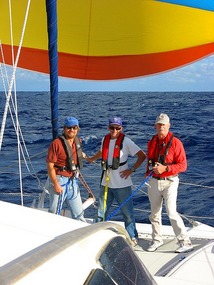
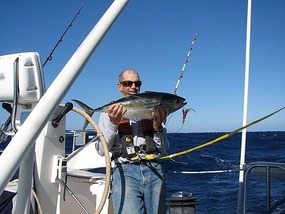
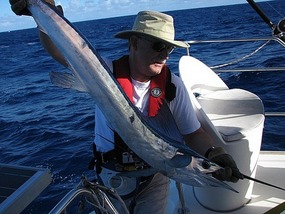

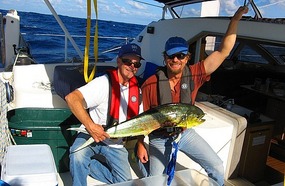
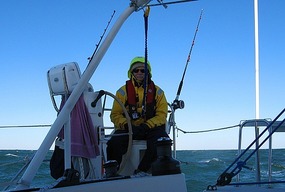











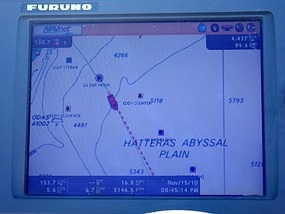
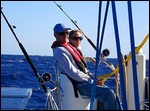
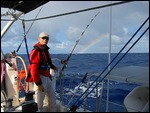
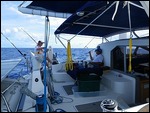
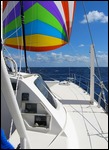
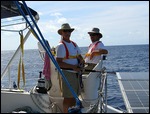
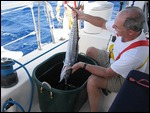
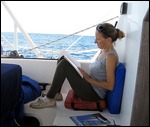

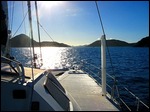
2025-05-23